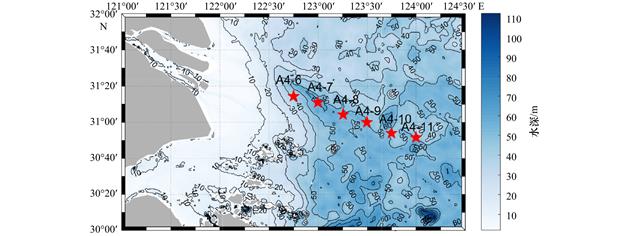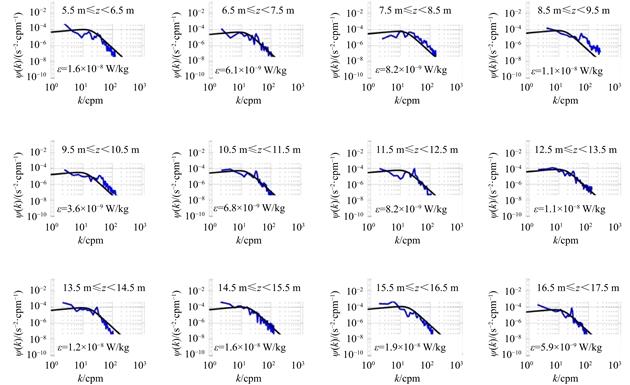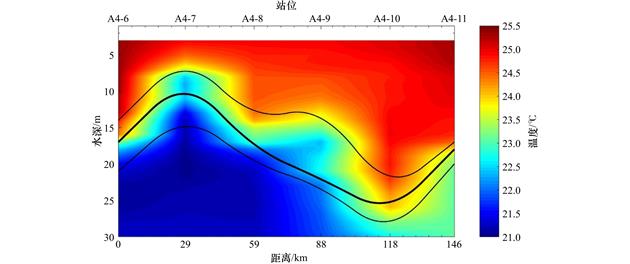| 夏季长江口及其邻近海域湍流特征分析 |
| |
| 引用本文: | 王寇,李博,李爱国,等. 夏季长江口及其邻近海域湍流特征分析[J]. 海洋学报,2021,43(11):22–31 doi: 10.12284/hyxb2021172 |
| |
| 作者姓名: | 王寇 李博 李爱国 王鹏皓 裴生鑫 |
| |
| 作者单位: | 1.浙江海洋大学 海洋科学与技术学院,浙江 舟山 316022;;2.舟山市自然资源测绘设计中心,浙江 舟山 316021;;3.国防科技大学 气象海洋学院,江苏 南京 211100 |
| |
| 基金项目: | 国家重点研发计划重点专项(2017YFA0604904);国家自然科学基金青年基金(41706022);国家自然科学基金(41849903) |
| |
| 摘 要: | 
利用2019年7月在长江口科学考察实验研究夏季航段(NORC2019-03-02)中获得的MSS90L湍流剖面仪的直接观测数据,本文计算并分析了该断面的湍动能耗散率ε和垂向湍扩散系数KZ的分布情况。湍动能耗散率的大小为1.72×10−10~2.95×10−5 W/kg;垂向湍扩散系数的大小为3.24×10−7~4.55×10−2 m2/s。湍动能耗散率和垂向湍扩散系数的分布相似,均为上层最强,底层次之,中层最弱。上层由于风应力的作用,使得湍动能耗散率和垂向湍扩散系数较大;温跃层处层化较强,抑制了湍动能的耗散和垂向上的湍混合。
盐度锋面的次级环流会促使低盐水团脱离,锋面引起的垂向环流会加强海洋的湍混合。低盐水团与外界的能量交换较少,湍动能耗散率较弱。长江口海区存在明显的上升流和下降流,它们是由锋面的次级环流产生的;上升流和下降流的存在促进湍动能的耗散与湍混合。

|
| 关 键 词: | 长江口 温跃层 湍动能耗散率 垂向湍扩散系数 盐度锋面 |
| 收稿时间: | 2021-01-17 |
| 修稿时间: | 2021-05-25 |
|
| 点击此处可从《海洋学报》浏览原始摘要信息 |
|
点击此处可从《海洋学报》下载免费的PDF全文 |
|



